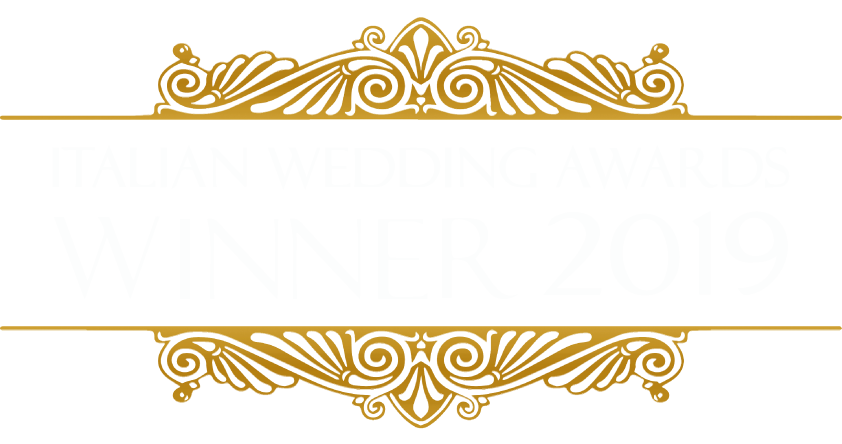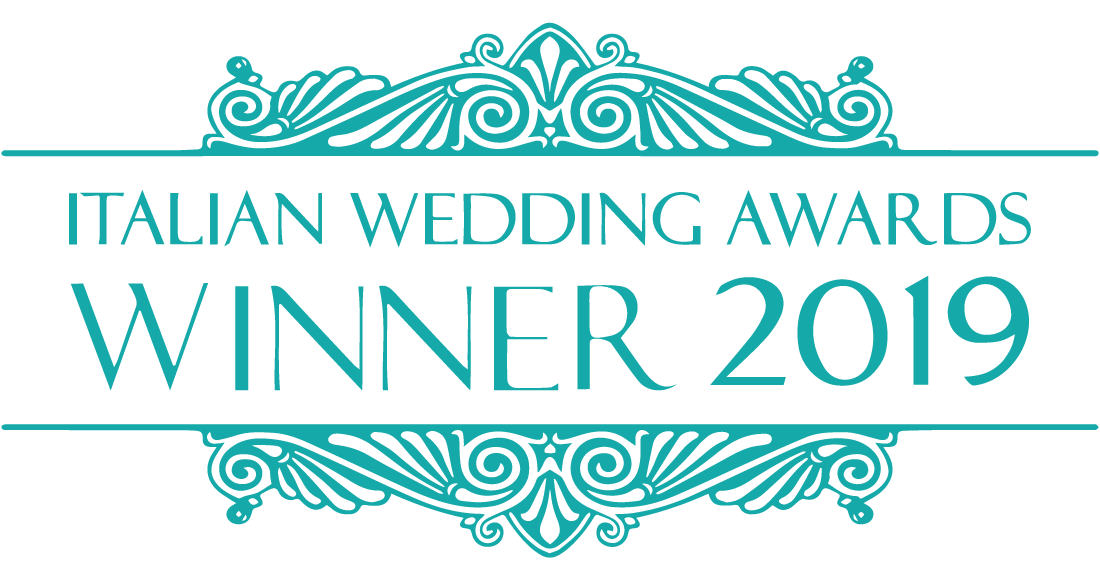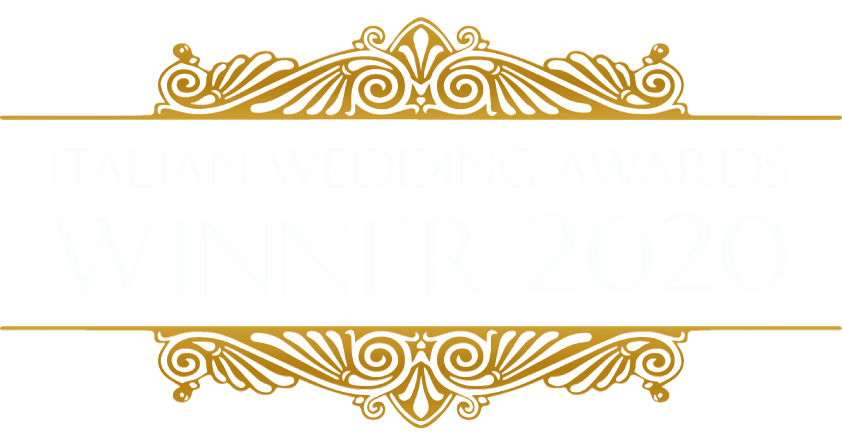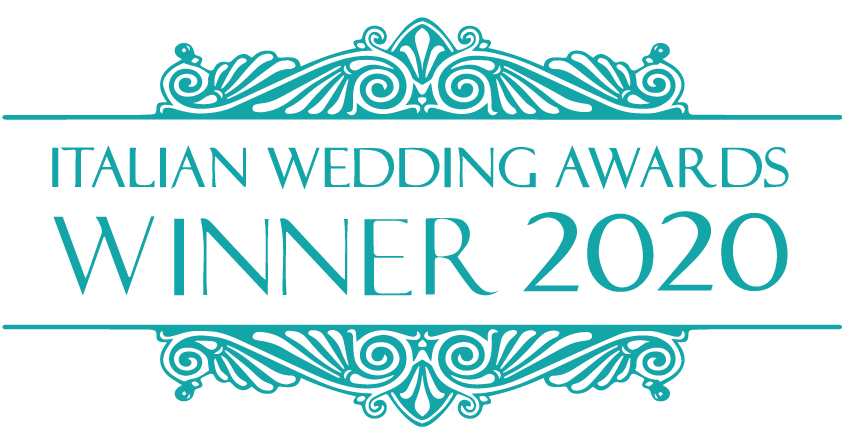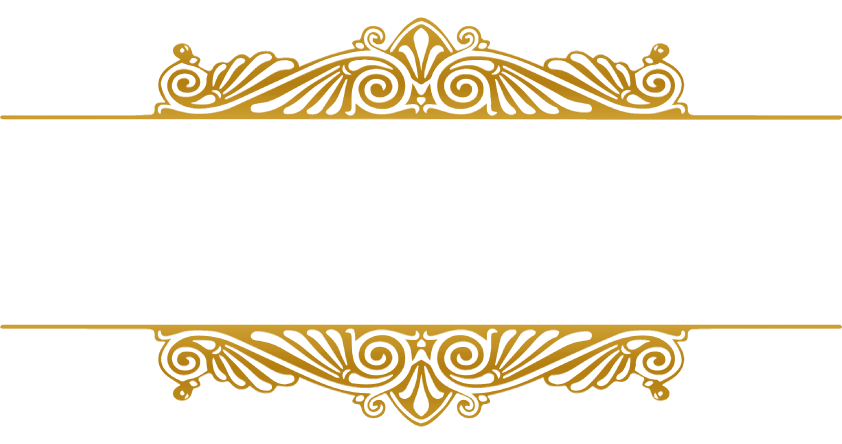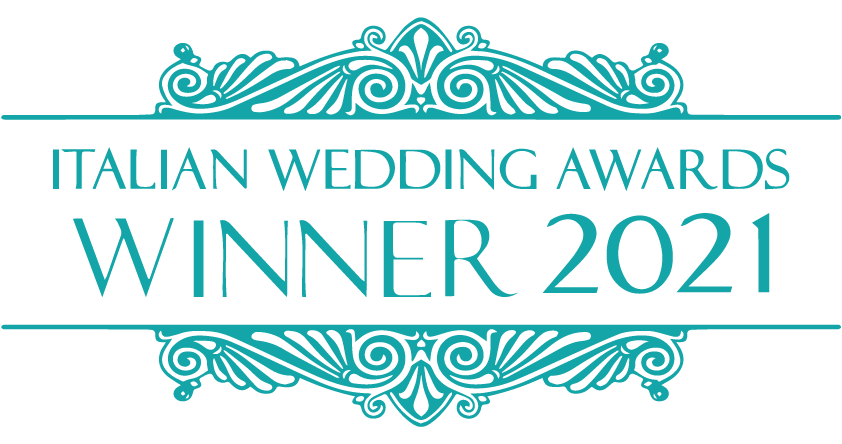This article is born of my curiosity, moved by the emotions and natural anxieties shared with me by those couples who arrive in my studio with their various ideas on preparations for their wedding. Many of these couples have spoken to me of symbolic ritual, which, I confess, I was far from clear on.
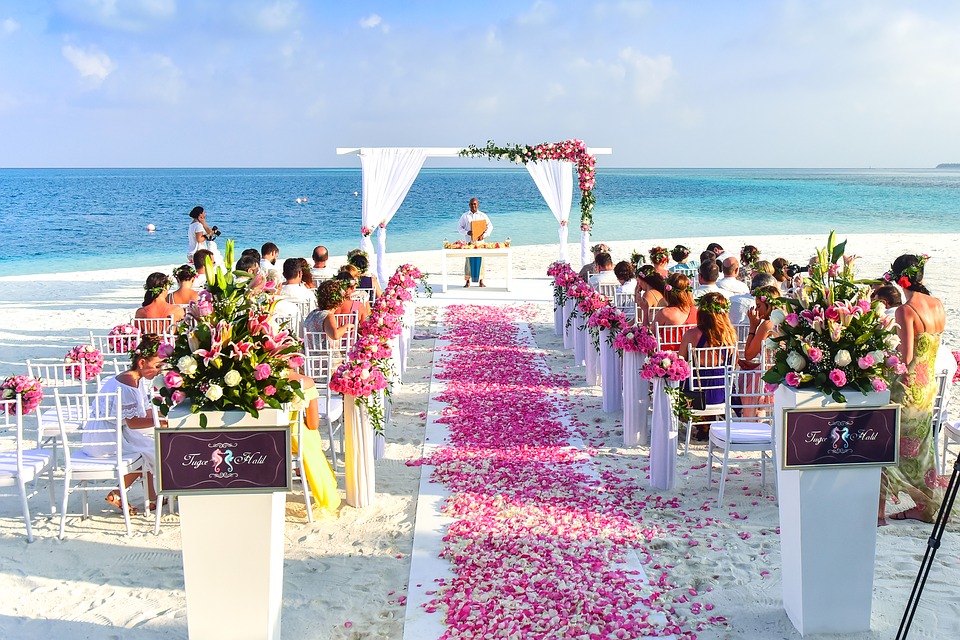
I decided therefore to dig deeper into the subject, undertaking research that has resulted in the drafting of this post. In the following paragraphs, therefore, I will explain to you what symbolic ritual is, the origins from which it is founded, and the reasons for its rediscovery. I will then provide various information that aims to help you in organising your original wedding ceremony, to be engraved in the memories of all the guests.
WHAT IS A WEDDING WITH SYMBOLIC RITUAL?
A wedding with a symbolic ritual is a wedding celebration that sees, alongside its civil or religious function, a moment of pure spirituality which may involve other people, objects or gestures. The couple may decide to marry exclusively with this type of ceremony (the so-called symbolic wedding, which has no legal value) or celebrate it simultaneously with the civil or religious ceremony.
The location is decided by the couple according to their personal needs (whether logistic or creative): it could be a garden, a beach, a hilltop location or elsewhere. The ceremony can be officiated by any person chosen by the couple.
Why choose the symbolic ritual?
The sociologist Emile Durkheim affirmed that rituals are moments created by society in situations of collective effervescence. Subsequently, over time, society repeats those rituals mechanically, eventually forgetting why they were originally undertaken (to give a practical example, just think about processions). The symbolic rituals of weddings do not escape this dynamic.
Why then is it increasingly chosen by couples? The underlying reason is most probably the process of secularisation taking place in Western society; the idea that religion, and consequently its rituals, are progressively losing influence. But this is not quite enough for us to fully understand why the symbolic ritual is increasingly chosen.
To go deeper into the question it is necessary to approach the magic, the enchantment, the experience, that such a moment is able to provide, committing to history a day that is already memorable in itself . This is perhaps the main reason for the recent success of this type of ceremony. The search for a unique atmosphere, for moments that will echo in history, for emotions that transcend the more classical celebration.
IDEAS FOR THE SYMBOLIC RITUAL
The symbolic ritual, as I explained previously, can involve gestures, people, symbols. There is, however, a common denominator: its profound spirituality. A brief summary: you and your sweetheart have decided to marry, but you want your ceremony to have an additional, special element compared to the normal civil or religious celebration. Here are some ideas.
The rite of the rose. The rose: the accomplice flower in romantic dances, breathtaking kisses, long-awaited reconciliations. In this ritual the celebrant, or one of the witnesses, will present two roses to the spouses. The two flowers will represent the first gifts exchanged after the promise of love.
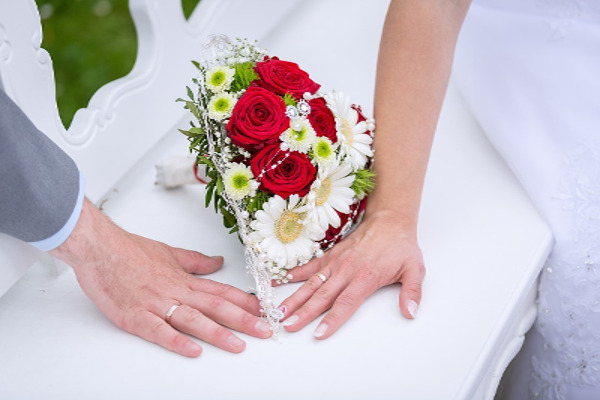
The ritual of candles. The couple await their guests at the entrance to the location chosen for the ceremony and invite them to each light a candle and to recite a blessing. The central part of the ceremony sees the bride and groom, who with two different candles light a larger one: a new flame to symbolise the creation of the new family unit. It seems that this ritual has its origin in African tradition: the combining of the two flames represents the union of the couple and their families.
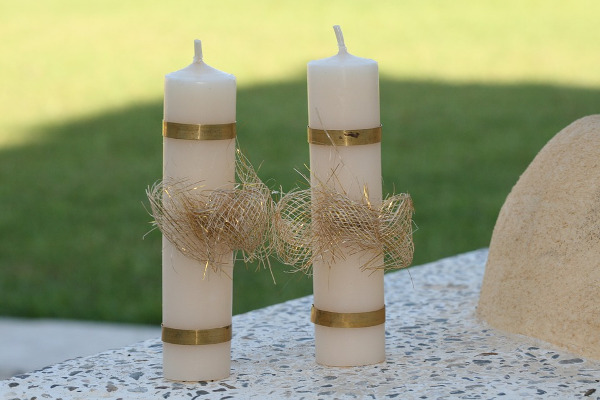
The tree planting ceremony. The spouses plant a single tree drawing the earth from two separate containers: representing two individuals becoming one union, ready to grow day after day.
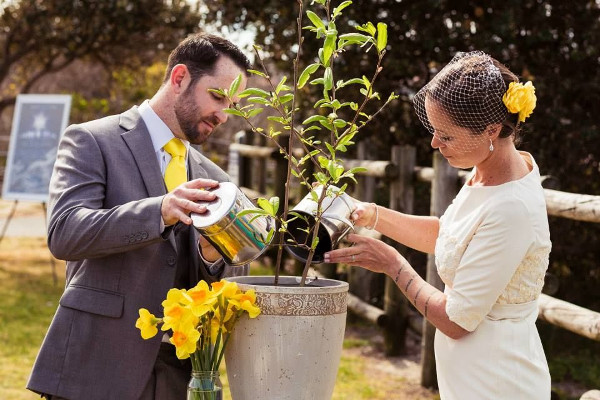
Handfasting. Or the ceremony of the tied hands. The hands of the spouses are linked to each other to symbolize the union of two souls.
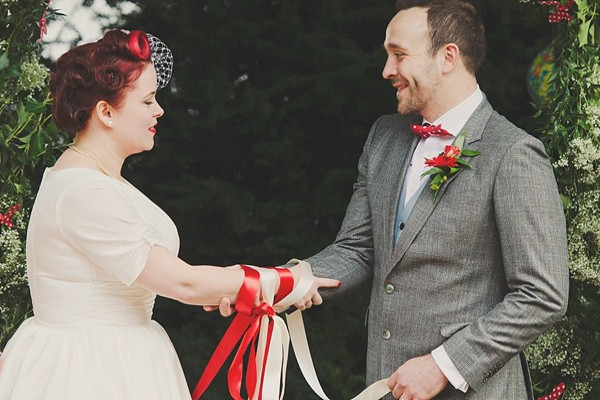
The wine ceremony. The couple seals a case inside which are some symbolic objects from their love story. Among these there may be a bottle of wine from the year in which the two met, a poem or a moving memory.
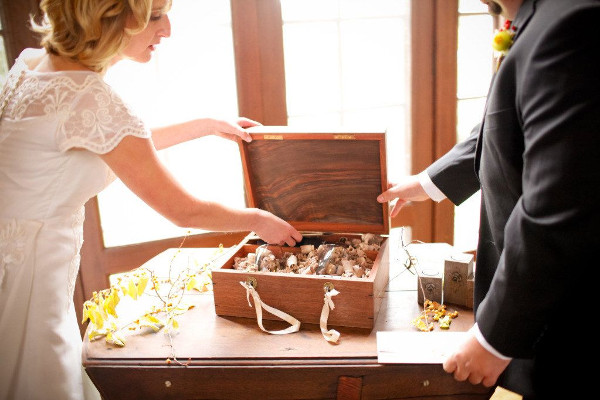
The rite of ribbons. A ritual dating back to the Celtic tradition. The spouses tie a fisherman’s knot: this ceremony symbolizes a bond that, even when under pressure, does not break, but is strengthened.
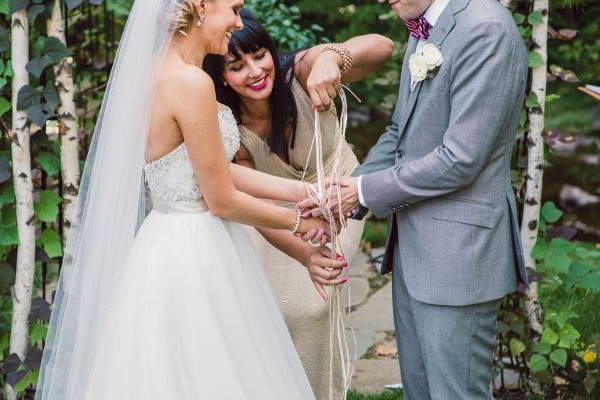
The rite of sand. Spouses draw sand from two different places, ideally places that represent a deep meaning for each of them. The sand can also be artificial, of two different colours. In both cases, during the ceremony, the couple will pour the sand into a container that they will keep forever at home. The granules, in mixing together, symbolize the union of two souls becoming one.
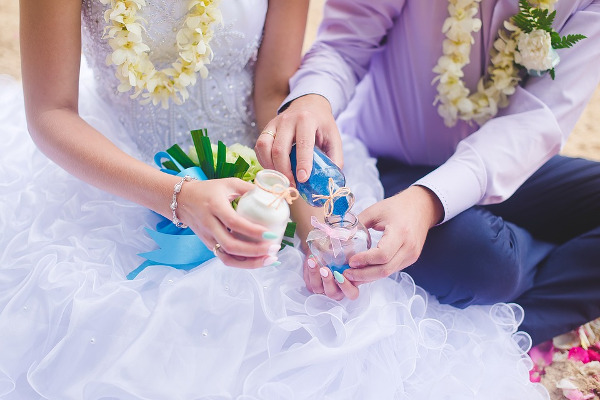
Ring Warming. A ceremony of high spiritual value: the rings of the spouses pass through the hands of their friends and family. The couple then exchange the rings, which hold of the energy of each of the guests, in an expression of their warmth and closeness.
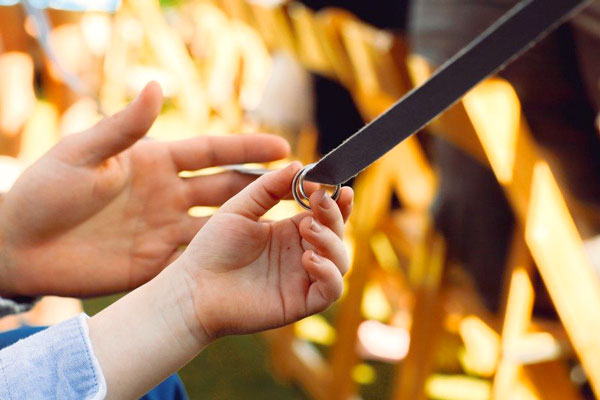
Steps towards a symbolic ritual
Many ask which is the best symbolic ritual and what are the best possible steps to take in creating a symbolic ritual. I believe that there is no perfect one for all. Much are the suggestions, the creativity, the history and unique experiences of the couple. I will deal with the issue better in a subsequent article.
THE RITE OF FIRE, MY PROPOSAL OF THE SYMBOLIC RITE
I have now explained some of the most celebrated symbolic rites and rituals. I am yet to describe my proposal, what my goldsmith workshop can offer. I'm referring to the Jewellery Experience. A true and creative symbolic ritual that goes far beyond simply choosing personalized wedding rings. But first, it is necessary to take a step back… right back.
Have you ever wondered why couples exchange rings at their weddings rather than any other object? The answer is found in ancient Egypt, where the rings represented strength and power and were created in a precious material such as gold to venerate those who wore them. The exchange of rings is the last of the gifts that the couple exchanges before swearing eternal love: it symbolises the melding of two lives into one.
One question is yet to be answered... Why are the wedding rings placed on the left ring finger? We return to ancient Egypt, where it was believed that inside this finger flowed a vein that lead straight to the heart, the iconic organ of Love. Starting from curiosities such as these, it came naturally to me to consider further what could be done to make the ritual of the rings as special as possible.
And so it began, the search for a moment that makes the wedding ceremony one capable of sealing the beating of two hearts in one. Here we present the Jewellery Experience "Goldsmith for one day". A path in which the master goldsmith accompanies the future spouses from the design of the rings to the forging, created by them according to their very own preferences.
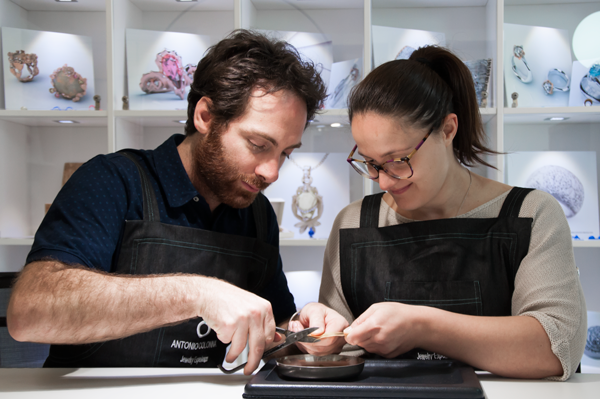
An experience that combines bespoke tailoring with emotion and passion in a single symbolic universe in which the fusion of metal represents the meeting of the past, present and future of the couple in a single instant destined to remain eternal.
Like a kiss.
If you would like to know more about the Jewellery Experience, or perhaps try it with your partner, send me an email, reach me on Facebook or book your free online consultation. I await you.













